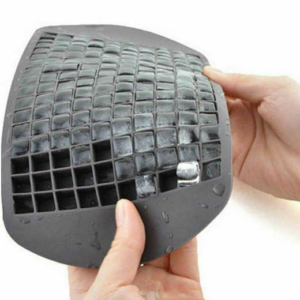There’s a (conspiracy) theory that John Lennon made a deal with the Devil which is the reason that he was able to create the Beatles and become famous. The rumor says that he made a deal that the Devil would “collect” his soul after 20 years and that Mark David Chapman’s killing of him was the Devil reaping his soul.
The fact that Chapman was actually religious and his primary motivation for killing Lennon was specifically a religious one (e.g., Lennon’s misunderstood statement about the Beatles being bigger than Jesus and not believing in Jesus), there are some massive logical failures with the theory.
Let’s start by working backwards to determine when this supposed deal was made. Lennon was killed on December 8, 1980, so according to the theory, that would mean he made the deal with the Devil on December 8, 1960.
For one thing, Lennon had already evolved from the Quarrymen to the Beatles months earlier (mid-1960), but that was still essentially his first band. If he were going to make a deal with the Devil, why would he have jumped to it after barely even one band? To believe the theory, you’d have to believe that he was impatient and/or lazy and didn’t even try before resorting to selling his soul.
More importantly, the band wasn’t yet famous or known, so how would anyone know the exact date and terms of the deal? 🤨 It’s not like Lennon did (or even would) ever state publicly such a deal, so how and why would anybody know about such a deal about someone who at the time was still just some random nobody? 🤦
Of course, conspiracy-theorists have an answer for everything and they’ll probably just make up some stuff like someone happened to find a copy of the deal (which I guess was inked in paper rather than some supernatural æther or something and John just happened to have lying around and the person who found it only told some crackpots instead of taking it to the news 🙄).
Pretty much every conspiracy of this type has the same logical fallacy, they presume knowledge of a deal with the Devil that was necessarily made when the subject of the conspiracy theory was still a nobody and thus, there would be no reason for people to watch or track or know anything about them or their goings on, and ignore the fact that any such deal would obviously be kept a secret.
The better theories attempt to lend credence by claiming that the subject had better skills at something (usually music) after the deal, completely ignoring the concept of practice. I guess they believe that nonsense about doing something over and over again being the definition of insanity when it’s actually just practice. 🙄
The top-tier conspiracies will actually go so far as to try to repudiate practice as an explanation by claiming the increased skill was sudden, that they went from bad to amazing overnight. For one thing, that’s not impossible, it can and does happen; there are plenty of times when something just “clicks” and suddenly something becomes easy (even without some sort of trauma like being in a car-accident or hit by lightning which on numerous occasions, has given people savant-like abilities they didn’t have before). But even more likely is that the claim of sudden improvement is just made up; nobody who repeats the story actually knows or remembers or was there and it’s just myth.

